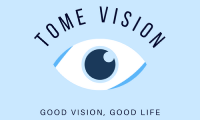The Impact of Digital Devices on Our Eyes
In today’s digital age, digital devices have become an integral part of our lives. From smartphones and tablets to laptops and desktop computers, these devices have revolutionized the way we communicate, work, and entertain ourselves. However, the excessive use of digital devices can have a negative impact on our eyes. In this article, we will explore the effects of digital devices on our eyes and discuss ways to minimize potential harm.
Effects of Digital Devices on Our Eyes
1. Digital Eye Strain:
One of the most common complaints associated with excessive screen time is digital eye strain. When we stare at screens for extended periods, our eyes become fatigued and dry, leading to discomfort and blurry vision. This condition, also known as computer vision syndrome, can cause headaches, neck and shoulder pain, and even difficulty focusing on distant objects. Additionally, the blue light emitted by digital screens can disrupt our sleep patterns, as it suppresses the production of melatonin, the hormone responsible for regulating sleep.
2. Dry Eyes:
When we use digital devices, we tend to blink less frequently, which can lead to dry eyes. Blinking is essential as it spreads tears over the front surface of the eyes, keeping them lubricated and nourished. Prolonged screen time reduces the frequency and quality of blinking, causing eye dryness, itching, and redness.
Ways to Minimize the Impact
1. Follow the 20-20-20 Rule:
Give your eyes regular breaks by following the 20-20-20 rule. Every 20 minutes, shift your eyes to look at an object at least 20 feet away for 20 seconds. This practice helps reduce eye strain and fatigue caused by continuous focusing on a nearby screen.
2. Adjust Display Settings:
Optimize your device’s display settings to reduce eye strain. Increase the text size and make sure the brightness level is comfortable for your eyes. Adjust the color temperature to a warmer setting to reduce the amount of blue light emitted. Some devices also offer a night mode or blue light filter, which can be activated during evening hours to minimize the impact on sleep patterns.
3. Practice Good Ergonomics:
Maintain good posture while using digital devices to prevent strain on your eyes, neck, and shoulders. Position your screen at eye level, about an arm’s length away from your face. Use a chair with proper support and consider adding a cushion behind your lower back. Additionally, ensure that your workspace is well-lit to minimize eye strain.
4. Blink Frequently:
Make a conscious effort to blink regularly to keep your eyes moist while using digital devices. Set reminders if needed, to remind yourself to blink every few minutes. You can also use artificial tears or lubricating eye drops to alleviate dryness and provide extra moisture to your eyes.
5. Take Regular Screen Breaks:
In addition to following the 20-20-20 rule, it is crucial to take regular breaks from screens altogether. Engage in activities that do not require screen time, such as reading a book, going for a walk, or practicing a hobby. These breaks allow your eyes to rest and recover from the strain caused by continuous digital device usage.
Conclusion
While digital devices have become an integral part of our lives, it is essential to be mindful of their impact on our eye health. By following the suggested tips to minimize eye strain and taking regular breaks, we can ensure that our eyes stay healthy and reduce the potential long-term effects of excessive screen time. Remember, our eyes deserve as much care and attention as any other part of our body.
